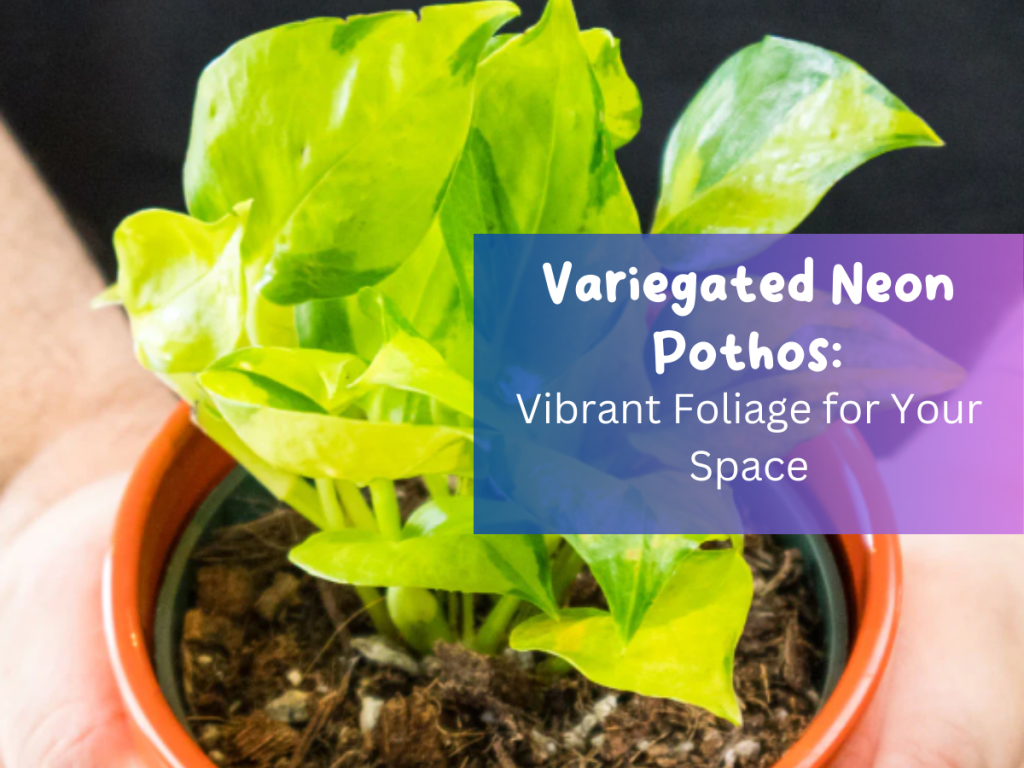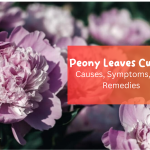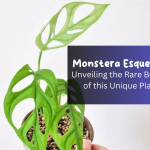Variegated Neon Pothos (Epipremnum aureum), also known as Devil’s Ivy, is a popular houseplant cherished for its vibrant foliage and easy-to-care nature. With its striking combination of bright green leaves and splashes of yellow, this plant is visually appealing and brings numerous benefits to any indoor space. In this article, we will explore the unique characteristics of the Variegated Neon Pothos, learn how to grow and care for it, and discover why it has become a favorite among plant enthusiasts and interior decorators.
Understanding
Variegated Neon Pothos is a cultivar of the Epipremnum aureum species, native to the Solomon Islands. What sets it apart from other pothos varieties is its stunning variegation, featuring broad swaths of bright lime-green leaves adorned with irregular patches of neon-yellow. This color combination adds energy and vibrancy to any room, making it a popular choice for those seeking a visually appealing houseplant.
Variegated Neon Pothos has heart-shaped leaves with pointed tips that can grow up to 2 to 4 inches in length. The vines of this plant can trail elegantly or climb with the help of a support structure. It is a relatively fast-growing plant, which makes it an excellent choice for those who want to witness its lush foliage develop and fill a space.

Growing Conditions
Variegated Neon Pothos requires specific growing conditions to thrive. You can ensure optimal growth and vibrant foliage by providing the right environment.
- Light:
Variegated Neon Pothos thrives in moderate to bright indirect light. It can tolerate lower light conditions but may result in reduced variegation and slower growth. Avoid placing it in direct sunlight, as this can scorch the leaves. If you notice the foliage becoming pale or lacking vibrant colors, it may indicate that the plant receives insufficient light.
- Temperature:
Maintain a temperature range of 60-85°F (15-29°C) for the best growth. Variegated Neon Pothos is adaptable to various temperature conditions, but it prefers warmer environments. Avoid exposing the plant to extreme cold drafts or hot, direct sunlight, as it can stress the plant and hinder its growth. Fluctuations in temperature can cause the leaves to develop brown patches or curl.
- Humidity:
Variegated Neon Pothos appreciates moderate to high humidity levels. Indoor environments often lack humidity, especially during the winter months when heating systems are used. To increase humidity, you can regularly mist the plant or place the pot on a tray filled with water and pebbles. Another option is to use a humidifier to create a more favorable environment for the plant.
- Soil:
A well-draining potting mix with good water retention is recommended for Variegated Neon Pothos. The ideal soil mixture consists of peat moss, perlite, and compost. This combination ensures proper drainage while retaining enough moisture for the plant’s roots. Using a pot with drainage holes is essential to prevent waterlogging, which can lead to root rot.
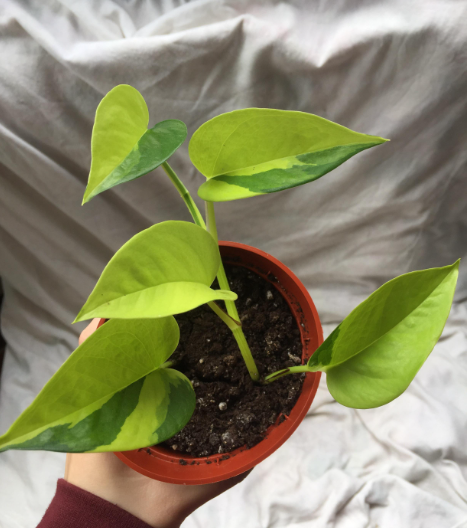
Watering and Feeding
Proper watering and feeding are essential for the health and vitality of Variegated Neon Pothos.
Watering:
Variegated Neon Pothos prefers moist soil but is susceptible to root rot if overwatered. Allow the top inch of soil to dry out before watering. Stick your finger into the soil to gauge moisture levels. If it feels dry, it’s time to water the plant. However, it’s best to wait a little longer if it feels moist. When watering, thoroughly saturate the soil until water drains out of the bottom of the pot. Remove any excess water to prevent the plant from sitting in standing water.
Watering frequency may vary depending on temperature, humidity, and the potting mix. In general, you can expect to water Variegated Neon Pothos every 1-2 weeks but always rely on the soil’s moisture level as the ultimate guide.
Feeding:
During the growing season (spring and summer), fertilize the plant every two to four weeks using a balanced liquid houseplant fertilizer. Dilute the fertilizer according to the package instructions. Applying a balanced fertilizer helps provide the necessary nutrients for healthy growth and vibrant foliage.
Reduce or cease feeding during the winter when growth slows down. Always follow the recommended dosage to avoid fertilizer burn, which can damage the roots.
Pruning and Propagation
Are essential for maintaining and expanding your Variegated Neon Pothos collection.
Pruning:
Regular pruning helps maintain the shape and size of your Variegated Neon Pothos. It also promotes healthier growth and a fuller appearance. Trim any leggy or yellowing vines to encourage the plant to focus its energy on producing new foliage. You can pinch back new growth to stimulate branching and create a bushier appearance.
When pruning, use clean, sharp pruning shears to prevent the spread of diseases. You can also propagate the cuttings you prune to expand your Variegated Neon Pothos collection or share with friends.
Propagation:
Propagating Variegated Neon Pothos is a simple and rewarding process. Stem cuttings can be rooted in water or a well-draining potting mix.
To propagate in water:
- Select a healthy vine and cut it just below a node, which is the point where leaves emerge from the stem.
- Remove the lower leaves, leaving a few at the top for photosynthesis.
- Place the cutting in a jar or glass of water, submerging at least one node.
- Change the water every few days to prevent it from becoming stagnant.
Roots will develop within a few weeks, and once they are about an inch long, you can transfer the cutting to a pot with fresh potting mix.
To propagate in soil:
- Follow the same process as for water propagation but place the cutting directly into a small pot filled with a well-draining potting mix.
- Keep the soil slightly moist; within a few weeks, you will notice new growth emerging from the cutting.
- Ensure the pot is placed in a warm and well-lit area, but avoid direct sunlight.
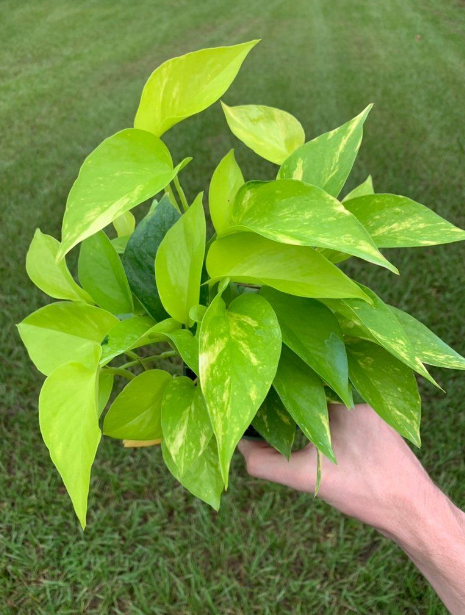
Common Pests and Diseases
Variegated Neon Pothos is generally a hardy plant but can still encounter a few common issues. Awareness of these pests and diseases will help you take prompt action if necessary.
Pests:
Look for common houseplant pests such as mealybugs, spider mites, and aphids. These pests can weaken the plant and hinder its growth. Regularly inspect the foliage’s leaves, stems, and undersides for signs of infestation, such as small insects, webbing, or sticky residue. Treat the plant promptly with organic insecticidal soap or neem oil if you notice any pests. These natural remedies effectively control pests while protecting the plant and the environment.
Diseases:
Overwatering can lead to root rot, a fungal disease that affects the plant’s roots and causes them to decay. To prevent root rot:
- Ensure proper drainage and avoid letting the plant sit in water for prolonged periods.
- Use well-draining soil and pots with drainage holes.
- If you suspect root rot, remove the affected parts of the plant and adjust your watering habits.
Low humidity levels may cause leaf browning or tip burn. Increasing humidity through regular misting or a humidifier can help alleviate these issues. Proper airflow around the plant also aids in preventing fungal diseases.
Conclusion:
Variegated Neon Pothos is a stunning houseplant that brings beauty and vitality to any indoor space. By providing the right growing conditions, including proper light, temperature, humidity, and well-draining soil, and following guidelines for watering, feeding, pruning, and propagation, you can ensure this beautiful plant’s optimal health and growth. Embrace the benefits of Variegated Neon Pothos, from its visually appealing foliage to its air-purifying properties, and enjoy its vibrant presence in your home or office for years to come. Read article about Causes of Monstera Dripping Water and Is a Cactus a Vegetable? in Avi Hoffman Garden.
FAQ
Yes, neon pothos can be variegated. Variegation refers to the presence of different colors or patterns in the foliage of a plant. While standard neon pothos typically has solid bright green leaves, variegated neon pothos cultivars have leaves with colorful green and yellow patterns or variegation.
Variegation in neon pothos, or any other plant, is caused by a genetic mutation. The mutation affects the production and distribution of chlorophyll, the pigment responsible for the green color in leaves. Variegation occurs when there are variations in the chlorophyll distribution, resulting in patches or streaks of different colors, such as yellow or white, alongside the green areas.
The difference between neon pothos and variegated neon pothos lies in their foliage appearance. Neon pothos typically has solid bright green leaves without any variegation. On the other hand, variegated neon pothos cultivars, such as ‘Neon’ or ‘Neon Pothos N’Joy,’ exhibit variegated patterns with bright green and yellow coloring on their leaves. The variegation adds an extra aesthetic appeal to the plant, making it more visually striking than non-variegated neon pothos.
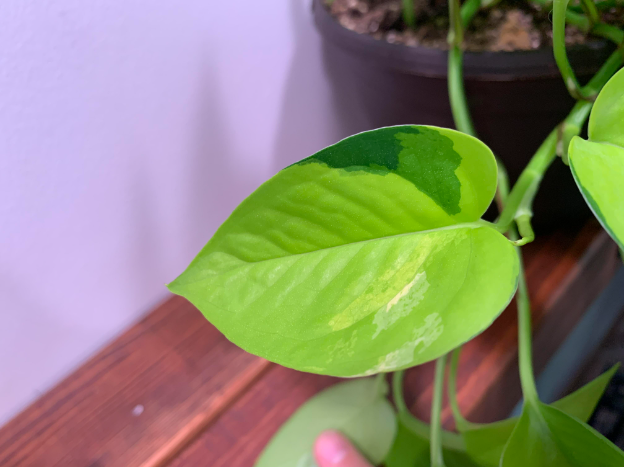
Yes, pothos can sometimes lose variegation. Variegation can be influenced by various factors, including light intensity, temperature, and the plant’s overall health. Insufficient light or too much direct sunlight can cause the variegated areas to fade or revert to solid green. Similarly, temperature extremes or improper care practices can impact the plant’s variegation. In some cases, new growth may appear with less variegation or without any variegation at all. To maintain the variegation, it’s crucial to provide the plant with suitable growing conditions, including moderate to bright indirect light and stable temperatures. Regular pruning and propagation from variegated cuttings can help preserve the variegation in pothos plants.

